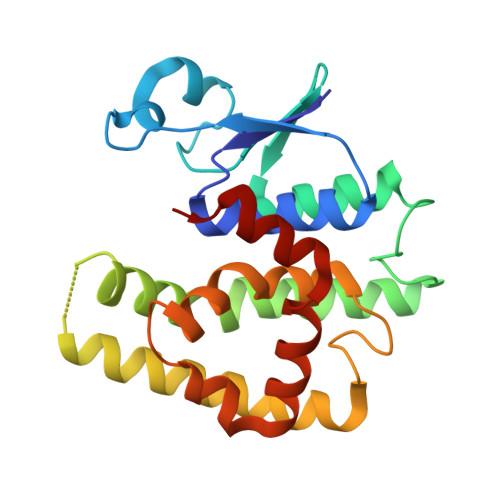Redox-regulated methionine oxidation of Arabidopsis thaliana glutathione transferase Phi9 induces H-site flexibility.
Tossounian, M.A., Wahni, K., Van Molle, I., Vertommen, D., Astolfi Rosado, L., Messens, J.(2019) Protein Sci 28: 56-67
- PubMed: 29732642
- DOI: https://doi.org/10.1002/pro.3440
- Primary Citation of Related Structures:
6EZY, 6F01, 6F05 - PubMed Abstract:
Glutathione transferase enzymes help plants to cope with biotic and abiotic stress. They mainly catalyze the conjugation of glutathione (GSH) onto xenobiotics, and some act as glutathione peroxidase. With X-ray crystallography, kinetics, and thermodynamics, we studied the impact of oxidation on Arabidopsis thaliana glutathione transferase Phi 9 (GSTF9). GSTF9 has no cysteine in its sequence, and it adopts a universal GST structural fold characterized by a typical conserved GSH-binding site (G-site) and a hydrophobic co-substrate-binding site (H-site). At elevated H 2 O 2 concentrations, methionine sulfur oxidation decreases its transferase activity. This oxidation increases the flexibility of the H-site loop, which is reflected in lower activities for hydrophobic substrates. Determination of the transition state thermodynamic parameters shows that upon oxidation an increased enthalpic penalty is counterbalanced by a more favorable entropic contribution. All in all, to guarantee functionality under oxidative stress conditions, GSTF9 employs a thermodynamic and structural compensatory mechanism and becomes substrate of methionine sulfoxide reductases, making it a redox-regulated enzyme.
Organizational Affiliation:
VIB-VUB Center for Structural Biology, Brussels, B-1050, Belgium.


















